A Fire in His Soul: How Paris Changed Vincent van Gogh
In his new book A Fire in His Soul, Miles J. Unger gives us Vincent van Gogh as we’ve never seen him before—abrasive, intransigent, egotistical,...
Ledys Chemin 21 February 2025
The sea has a mind of its own. Whether it is stormy or calm, a man knows that it is to be respected. In art, the seascape, as it is called, is a genre in its own right. Many artists have painted the sea and all its moods, with some building their whole careers around it. Let’s see some of the most wonderful seascapes.
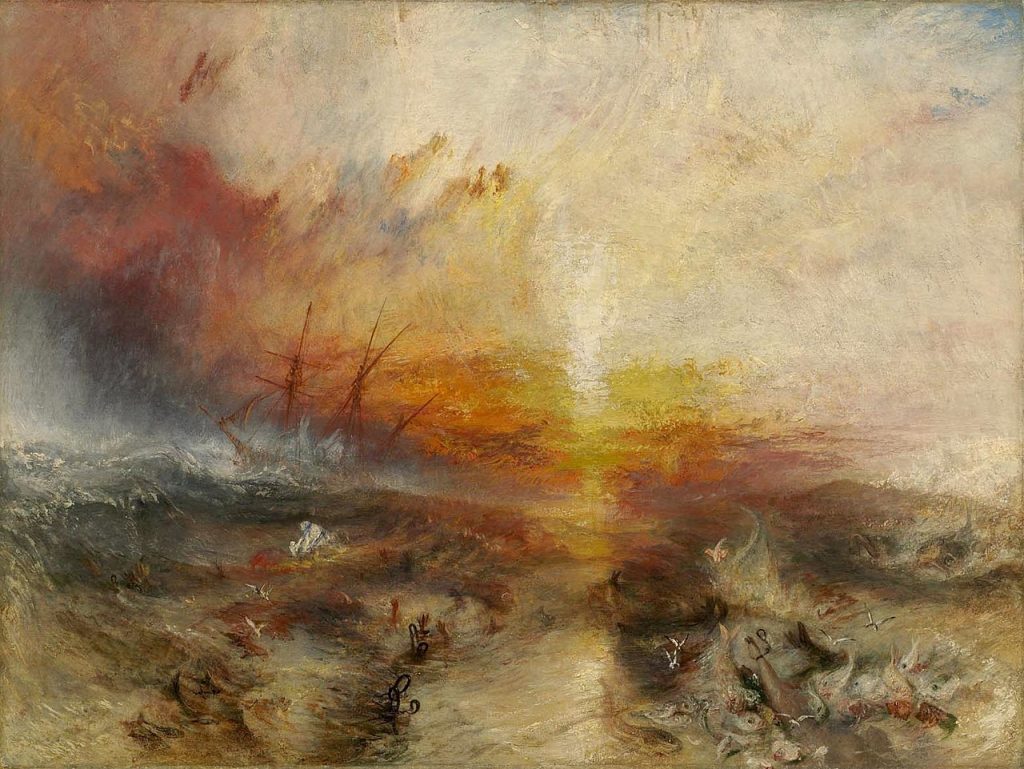
J.M.W. Turner, The Slave Ship, 1840, Museum of Fine Arts, Boston, MA, USA.
In one of his most famous works, Turner shows us violence in all its forms, both elemental and manmade. In a stormy sea, a slave ship is fighting to stay afloat while at the same time dumping some of the ill slaves to the waves. The story of the painting is based on true events, making the whole thing even more horrific.
The sky and the sea mingle in a powerful typhoon promising to swallow the ship and the poor souls fighting the waves. On the bottom right we can see the leg of a drowned slave.
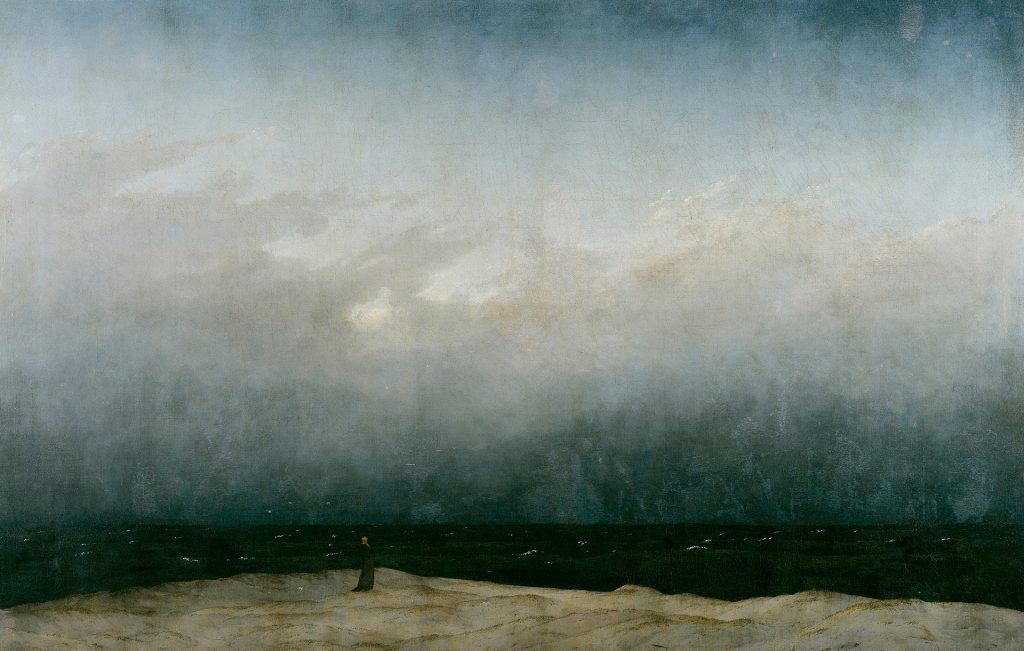
Caspar David Friedrich, Monk by the Sea, 1808–10, Alte Nationalgalerie, Berlin, Germany.
A tiny lonely figure stands before a vast seascape. Caspar David Friedrich, the most celebrated German romantic painter, brings forth the greatness of nature and the insignificance of man. In Monk by the Sea, Friedrich reminds us that nature in reality is genuinely untamable and that nature is where man finds the glory of God.
The landscape is formed with three horizontal bands: land, sea, and sky. The only vertical element is the monk. The horizon is low and the sky and the sea dominate the canvas. There are no distinct boundaries between the sea and the sky, it all blends in shades of black and blue. The colors emit a sense of foreboding.
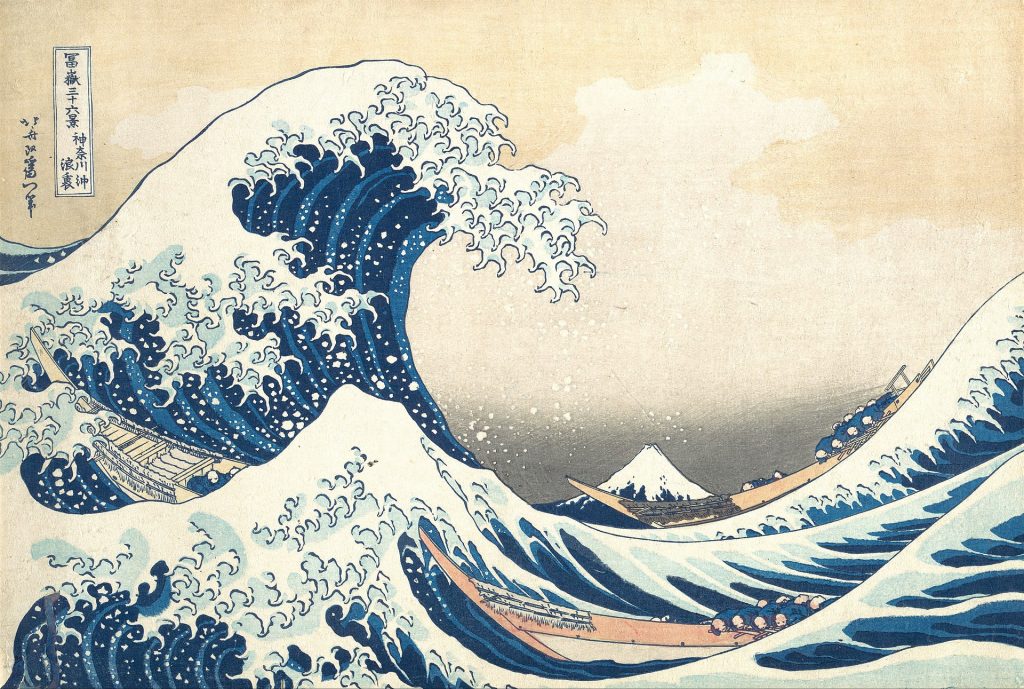
Katsushika Hokusai, The Great Wave Off Kanagawa, from the series Thirty-six Views of Mount Fuji, 1831, The Metropolitan Museum of Art, New York, NY, USA.
A giant wave is about to swallow the three fishing boats. In the distance, Mount Fuji, the highest mountain in Japan, looks minuscule when compared to the majestic rise of the waters.
The print is part of the Thirty-Six Views of Mount Fuji, a series of woodblock prints by Japanese artist Hokusai. The series was produced between 1830 and 1833 and follows the Ukiyo-e technique which means “floating world”. In this particular work, the most fascinating feature is the use of the Berlin blue color.
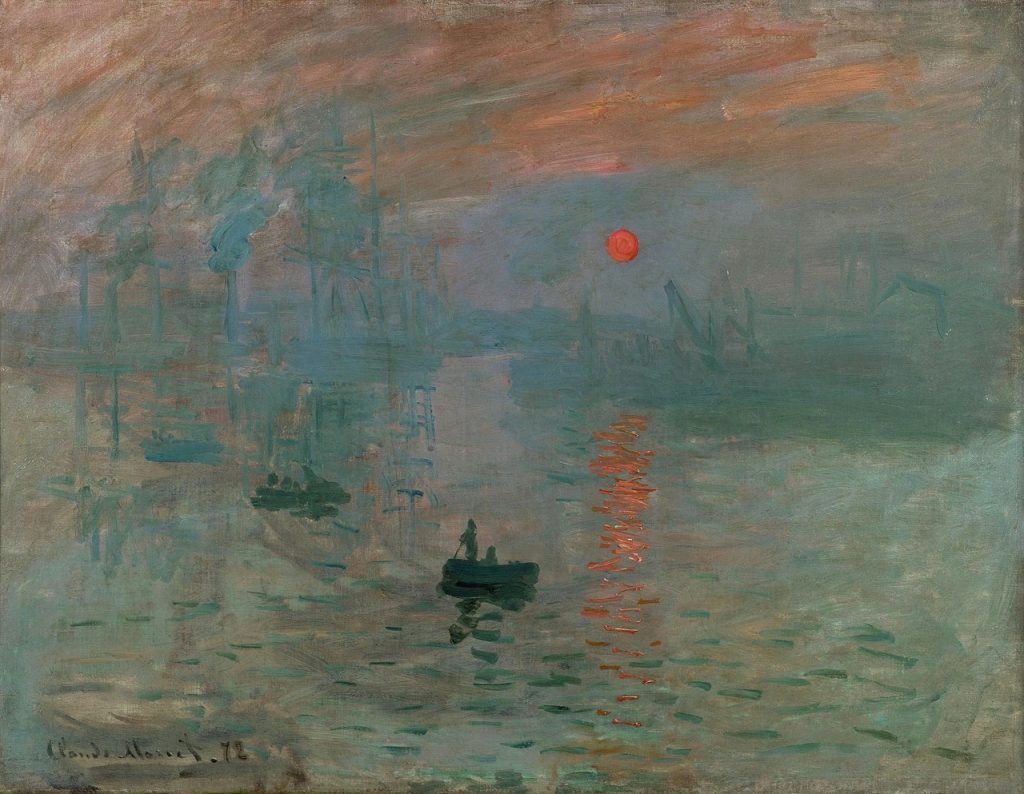
Claude Monet, Impression Sunrise, 1872, Musée Marmottan Monet, Paris, France.
Two rowboats float in the waters of Le Havre as a red sun slowly rises. In the back, the cranes of the port of the city seem ghostly in the morning fog. Monet depicted the seascape of his hometown in various conditions during the day, at dusk, and at night from different viewpoints. Of all six, this one, showing the port at dawn, is the most popular to this day.
Without Monet’s intention, this work gave the movement of Impressionism its name. Louis Leroy, an art critic, used the term “Impressionism” to describe the new painting style in his article about the first Impressionist exhibition in 1874.
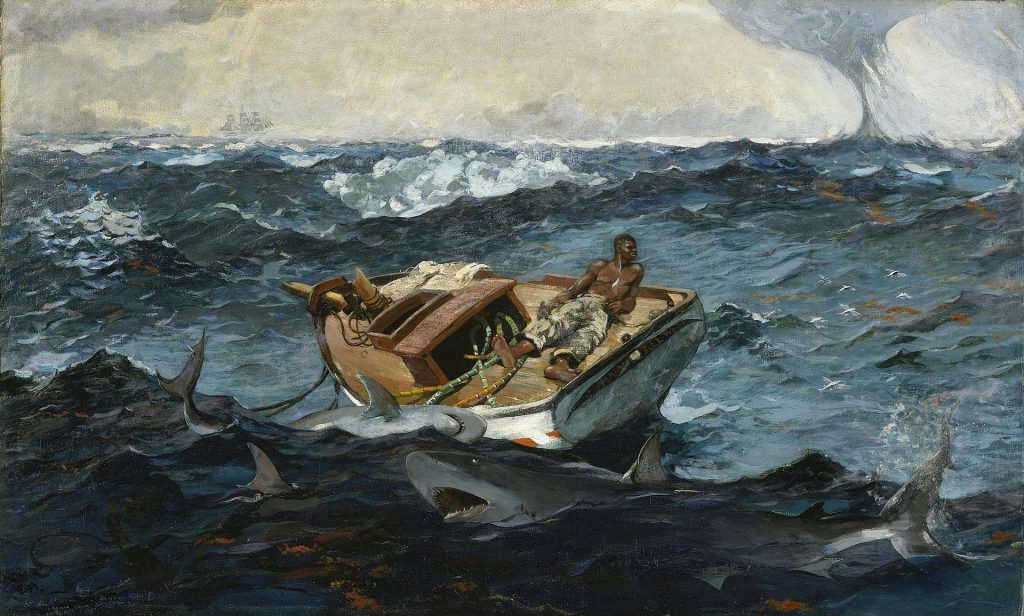
Winslow Homer, Gulf Stream, 1899, The Metropolitan Museum of Art, New York, NY, USA.
This is a dramatic scene. A small ruined fishing boat is fighting the waves in the Gulf Stream, the ocean current that starts from the Gulf of Mexico and flows to the US coastline. Around the boat, sharks prowl the waters, however, the young man atop the vessel seems fully disinterested in this predicament. Some may say that he is already resigned to his fate. But rescue may be at hand. On the far left we can see another boat in the water, but the fisherman is ignorant of this.
DailyArt Magazine needs your support. Every contribution, however big or small, is very valuable for our future. Thanks to it, we will be able to sustain and grow the Magazine. Thank you for your help!